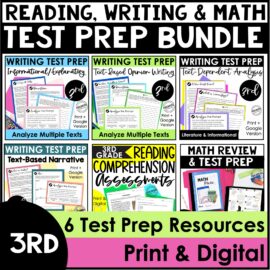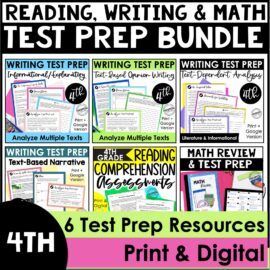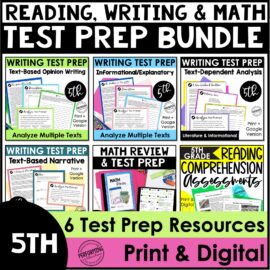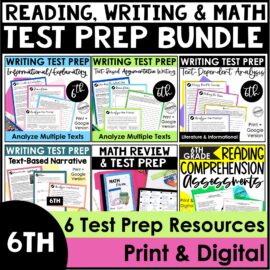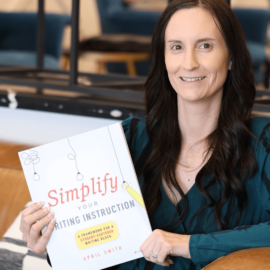When I first started teaching, our state reading test was pretty straightforward: read a passage and answer some comprehension questions. However, as the standards have changed and “assessment” has become a huge part of what we do as teachers, our reading test has become much more complex.
Now, in most state and district assessments, students are required to analyze multiple texts, examining not just the content but also the structure and author’s craft. I knew I needed to do something different to adequately prepare my students to master these challenging tests.
This year, I created a comprehensive test prep resource, with 4 different practice reading assessments. Each one provides students with a set of paired texts, comprehension questions that cover ALL the grade-level standards, and a written response. Making these key pieces part of your test prep routine will ensure your students are on the path to success on the reading test!

Using Multiple Texts
Some students feel overwhelmed at the thought of reading more than one passage on a reading test. I teach my students to work in small chunks to make the task more manageable.
First, we read one passage, stopping to annotate as we go. Students can use annotation bookmarks to help them remember how to mark the text. Next, we look at just the comprehension questions that apply to the first text. One by one, we work through each question, returning to the text to find evidence that proves each answer.

We do the same task with the next passage in the set. This time, after we read, we stop to make connections between the two texts. It can be helpful to do this verbally first before writing it down. That way, when it’s time to answer the questions that relate to both texts, students feel more confident in their analysis.
Questions to ask:
- What is the genre of each text?
- How are the texts similar in structure?
- What is the author’s purpose or point of view in each text?
- How do the main characters compare to each other?
- How do the texts differ in plot, theme, or presentation?
Respond in Writing
Many reading assessments require students to complete a written portion as they synthesize information from both texts. So, this is an important skill to practice ahead of time.
Model how to brainstorm ideas for writing using a simple graphic organizer. Depending on the type of prompt, I like to use an outline or a T chart. This teaches students to prepare their thoughts before immediately jumping in to write.
I encourage my students to use their annotations in their written response. Students should be returning to the texts to find evidence to support their thinking. Again, this needs to be modeled and practiced often. Because my Reading Comprehension Assessments contain 4 sets of passages, I can use one to model the task with students, and then provide my students with another set to practice independently.

Track the Data
Often, reading test prep stops after students have completed a practice assessment. However, it’s important to use the data from these review activities to guide your teaching.
I use a data tracking page that aligns each question on the comprehension assessment to a grade-level standard. After students finish their work, we go over the answers together. Students color code each question to show which ones they got correct and incorrect. Then, students (and me, as the teacher!) can see at glance which standards they’ve mastered and which ones need more work.
Finally, I use this list to keep track of any standards that need to be reviewed as a class. I can work on these skills with my class as a whole, or pull small groups of students to reteach specific standards before the reading test.

With careful modeling, practice, and review, your students will feel confident in tackling the end of the year reading test! If you’re looking for the perfect reading test prep resource, each of my Reading Comprehension Assessments include 2 literature assessments, 2 informational text assessments (8 texts in all), data tracking sheets, and a self-grading google form option (available for grades 2-6.)
